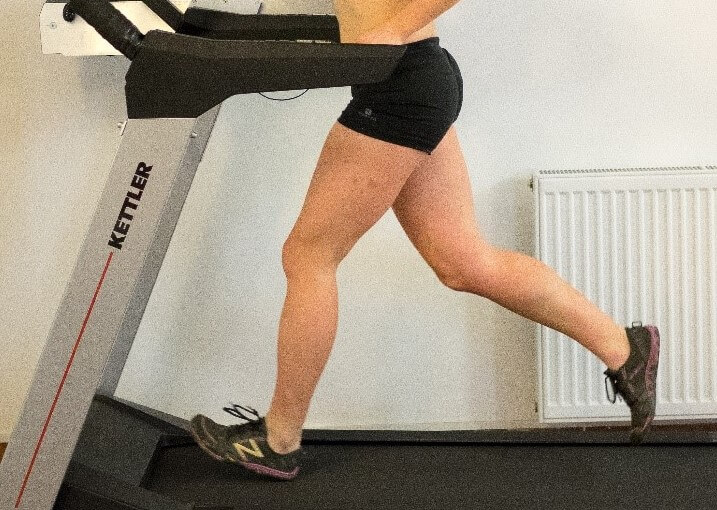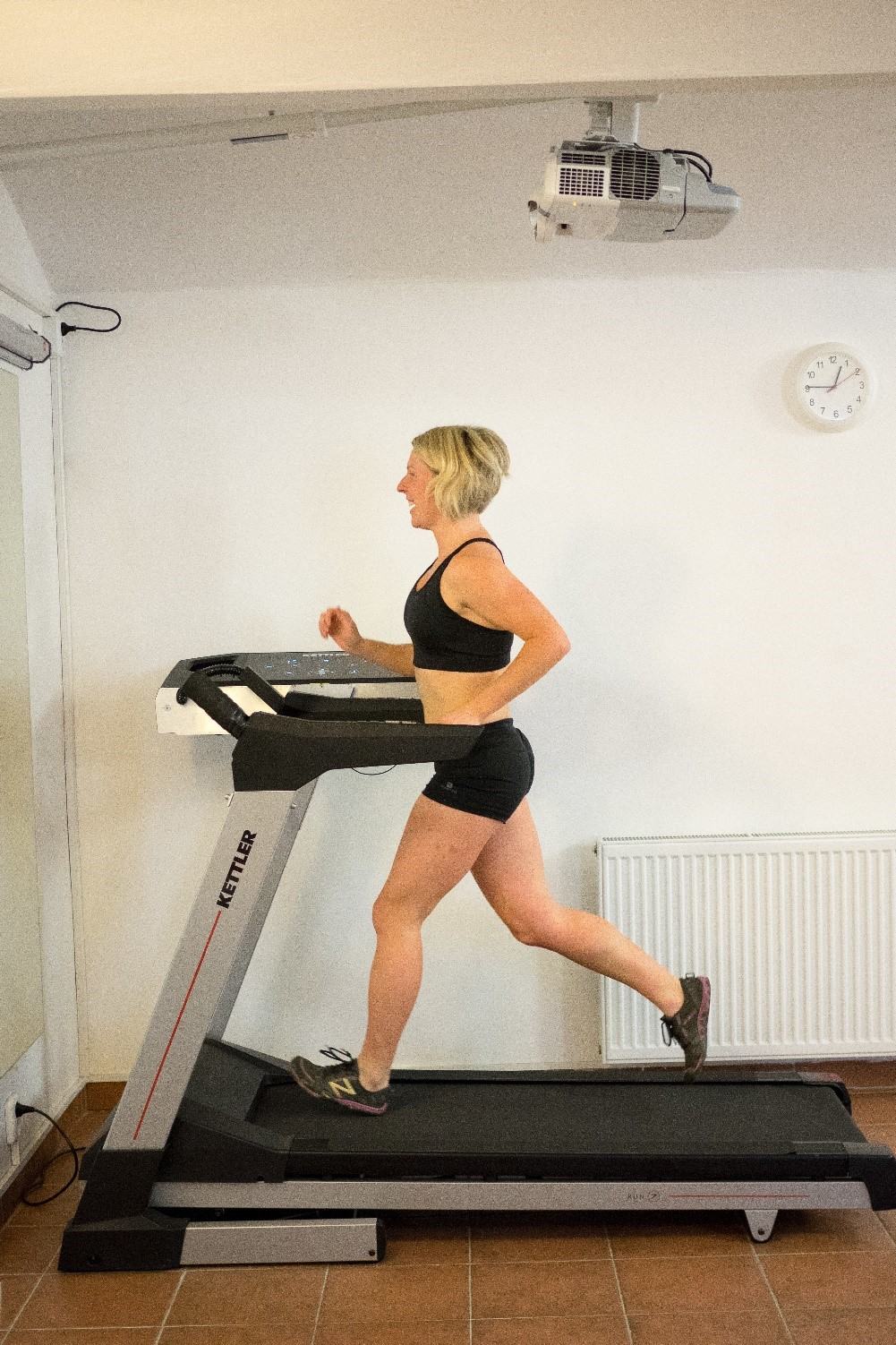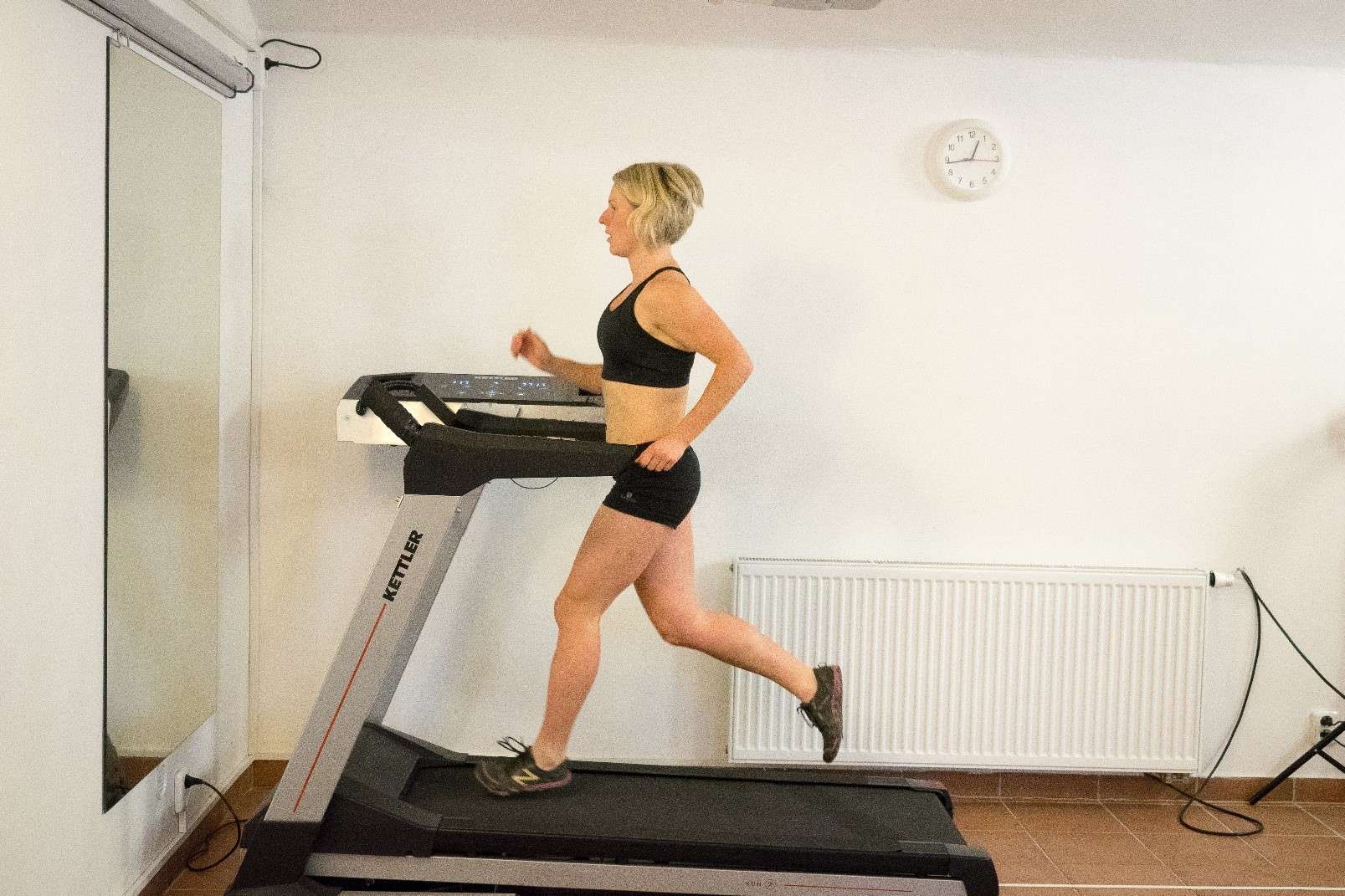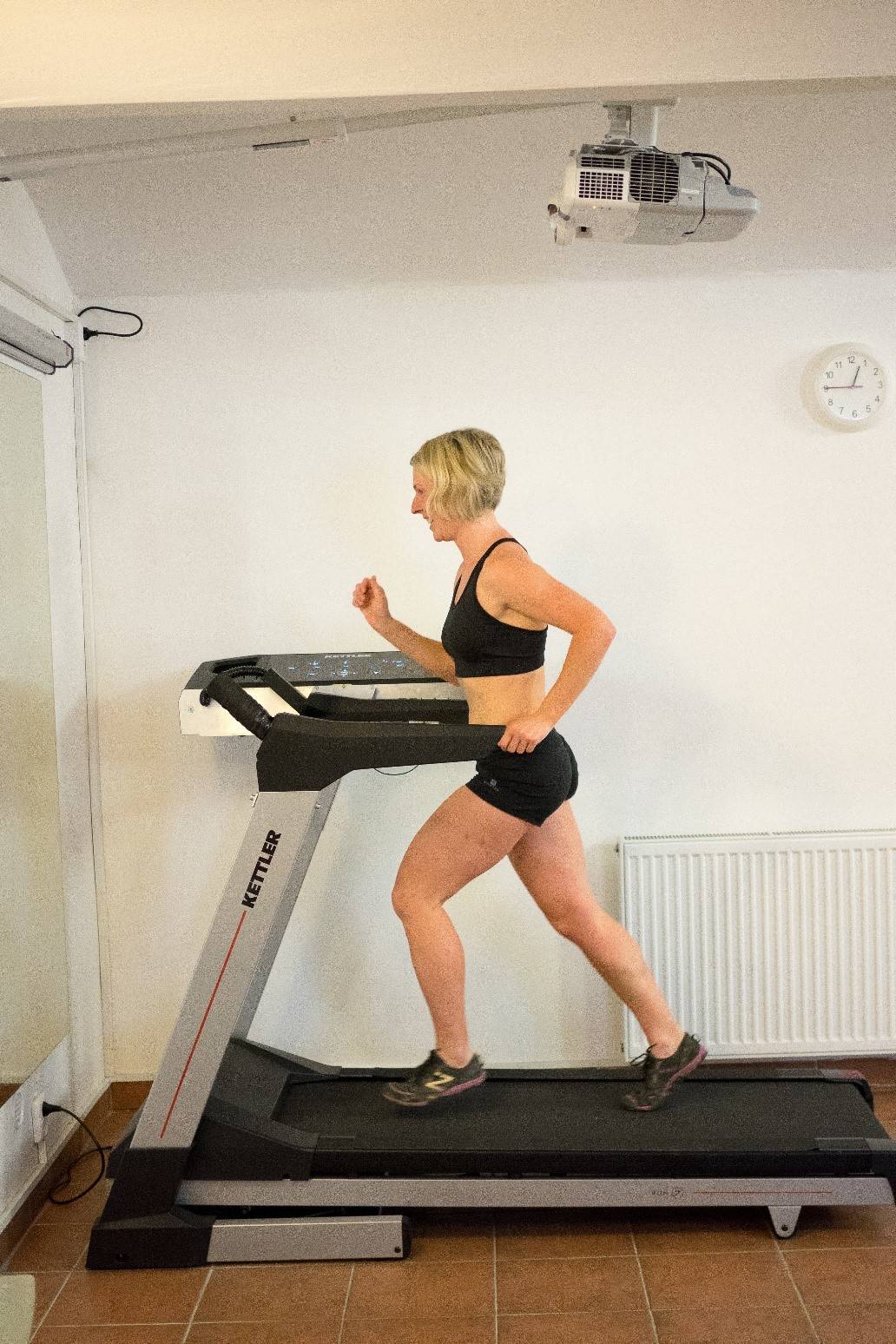Nejčastější běžecká zranění nohy
Zánět okostice, bolest Achillovy šlachy, bolest chodidel a další nepříjemnosti způsobené neoptimálním došlapem
Zánět okostice – periostitida – nejčastěji se objevuje na holeni. Obal kosti, který je bohatě inervován, je přetížen opakovanou a hlavně nárazovou prací svalů, které se na tuto kost upínají. Jako každá přetížená struktura se dostává do tzv. sterilního zánětu, bolí, může zčervenat a otéct. V akutní fázi je dobré ledovat, příslušný sval manuálně uvolňovat a po odeznění akutní fáze lehce protahovat. Často se uvádí, že je způsobená během po tvrdém povrchu. Viníkem ale není tvrdý povrch, nýbrž neideální a nešetrná technika běhu.
Bolest/zánět Achillovy šlachy – projevuje se bolestí šlachy přímo při běhání, častěji po něm nebo až další den ráno. Na šlaše se zpravidla vytvoří prstýnek – zduření. Je velmi citlivá na dotek, po ránu ztuhlá. Jedná se opět o sterilní zánět, který se vyvíjí dlouhodobě. Při neekonomickém a nesprávném stylu dochází k opotřebovávání šlachy a tím k malým trhlinkám a degenerativním změnám v této oblasti. Příčina potíží opět souvisí s běžeckým stylem. Často se objevuje například v souvislosti s nesprávnou funkcí nohy – odrazu od palce, práce prstů či oblastí dopadu na plosku nohy. Terapie je v akutní fázi totožná s terapií zánětu okostice.
Bolesti chodidla – plantární fascitida – projevuje se bolestí při úponu svalů nohy (fascií) k patě. Bolest se zvyšuje protažením prstů. Jde o přetížení svalů v oblasti plosky nohy, jejich nesprávné zapojování při běhu, nesprávnou biomechaniku chodidla. K potížím může například dojít při rychlém přechodu na minimalistické boty, kdy si noha nestačí zvyknout na zcela jiný běh. Nejrizikovější skupina běžců je s tzv. pronačním dopadem ale i ti s vysokou klenbou a velmi tuhou nohou.
Společným jmenovatelem výše zmiňovaných potíží je nesprávná biomechanika chodidla, došlapu a držení těla při běhání. Na obrázcích jsou zachycené tři typy dopadů.
První je u začínajících běžců nejčastější. Jedná se o dopad daleko před oblast pánve (těžiště těla) a na patu. Na obrázku je lepší varianta tohoto došlapu, nejhorší je, pokud je koleno úplně natažené, tzv. uzamčené. V takovém případě koleno nefunguje pro eliminaci nárazu při dopadu a pravděpodobnost vzniku potíží se zvyšuje. Při takovém dopadu se vaše pata sráží se zemí a pata funguje jako brzda této síly. Nárazy pak tedy tlumíme patou nebo se přenášejí do bérce či kolene. Exponované oblasti se přetíží, vzniknou malé trhlinky v tkáni a po dalším přetěžování chronický zánět.
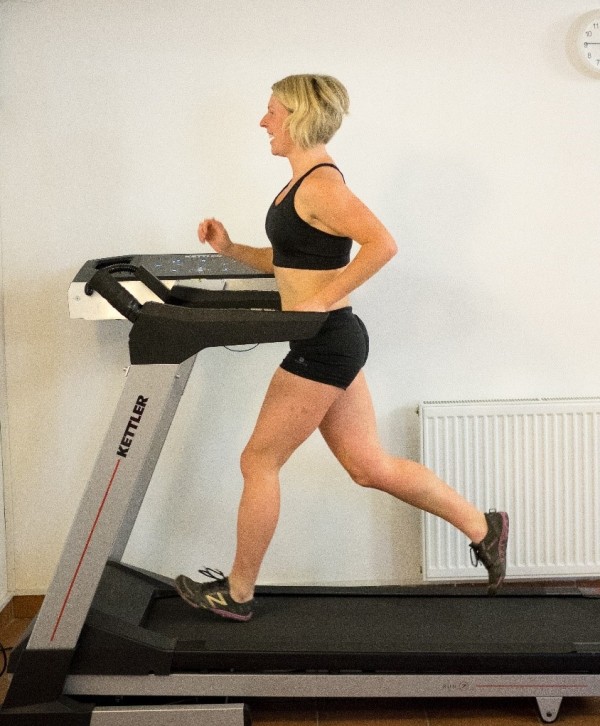
Další obrázek zachycuje trochu lepší typ došlapu, ale i tento stále vede k potížím. Takto to většinou vypadá, když tzv.“patař“ chce přejít do běhu přes špičky. Délka kroku zůstává skoro stejná, nebo se jen mírně zkrátila a dopad je na propnuté chodidlo. Nastavení trupu je stejné, takže dopad je stále před těžiště. Špička nohy musí v tomto případě absorbovat celý náraz, musí ji podržet lýtkový sval. Ten je pak klasicky po takovém běhání velmi namožen a poraněn rychlými kontrakcemi s nárazy. Také může bolet příčná klenba. Často se to vyskytuje u lidí, kteří nazuli barefoot boty a začali běhat přes špičku, aniž by změnili ostatní parametry, které by běh naboso měl mít.
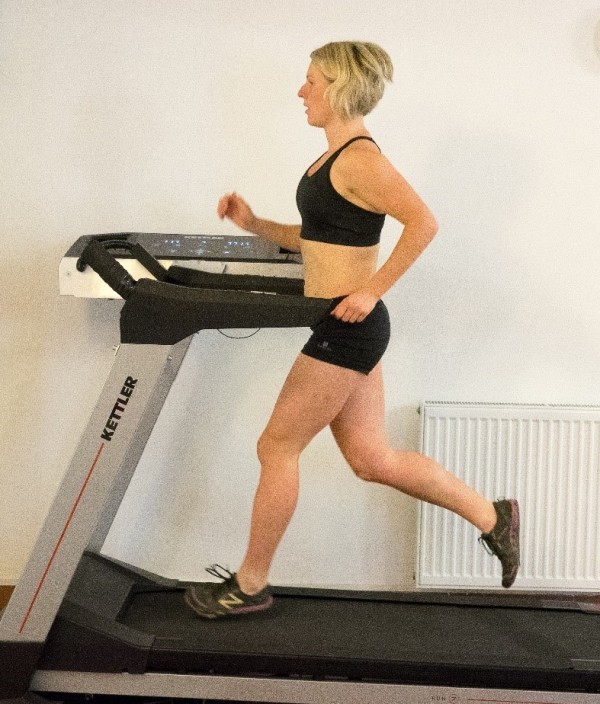
Poslední fotografie ukazuje optimální dopad pro prevenci úrazů i ekonomiku běhu. Toho dosáhneme zvýšením náklonu celého těla. Celého těla myslím, opravdu celého, od kotníků až po hlavu – nejedná se tedy o zlomení se v pase a vystrčení pánve vzad. Dopad by měl být na přední část nohy, ne na špičku. Náklon sám nás už navede do zkrácení kroku a zvýšení její frekvence. Člověk nezvyklý správné frekvence kroku má pocit, že cupitá. Je potřeba jen překlenout první fázi nezvyku, než si běh zafixujete jako přirozený.
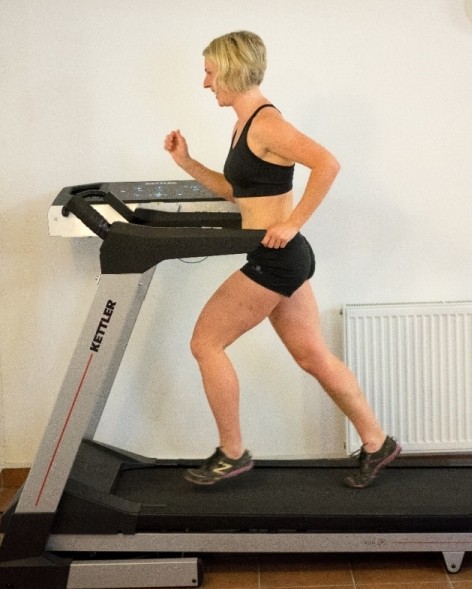
Komplexní informace o běhání z pohledu získáte také na celodenním běžeckém workshopu s Petrem Soukupem
Přečtěte si dále, jaký je rozdíl mezi diagnostikou došlapu a diagnostikou běhu.

